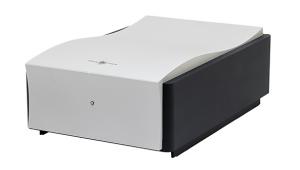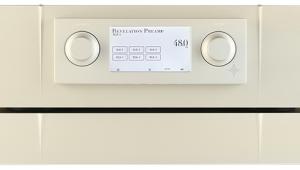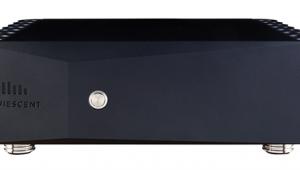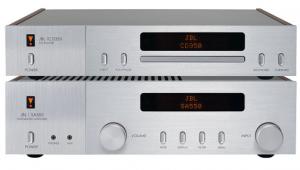NAD M23 Class D Power Amp Page 2
![]() Lap Of Luxury
Lap Of Luxury
Having experience of earlier NAD amplifiers, including its recent Eigentakt designs, I went into my listening sessions thinking I knew what to expect but still came away surprised. The M23 shares all the hallmarks of its C 298 sibling – the unruffled power it brings to bass and drums; the speed in which it responds to transients – but sounds more refined and more luxurious. That this blend of dynamic ability and smooth delivery comes from a relatively small box, easily able to shake a large floorstander or grow the stature of a standmount, is the icing on the cake.
Picking its 'best' attribute is tricky, because it almost has a chameleonic ability to get the best from a variety of musical genres. For example, with Ellie Goulding's poppy chart hit 'Burn' [Halcyon Days; Polydor 3747026], the M23 zeroed in on the keyboards and the singer's vocals, giving a deep, lushness to the former while projecting the latter toward me, and sounding inherently upbeat. On the other hand, with John Carpenter's 'Theme From The Fog' […Original Film Soundtrack – Expanded Edition; Silva Screen SILCD1301] it held on to the low, long synth notes and didn't let go, creating a tense, eerie atmosphere.
Cheer Leader
That track doesn't enjoy a pristine mix, and this was obvious with the M23 at the helm, such is its revealing nature. Jimi Hendrix's 'Purple Haze' [Are You Experienced; Sony Music Tidal MQA] benefits from a more skilful recording, albeit with a one-take feel, and this amplifier had the transparency to let me focus on his guitar playing, and notice every bend and vibrato. So the M23 will both make you painfully aware of some of the audiophile limitations of your cherished favourites, and let you listen to others with a critical focus. I must have heard Don McLean's 'Everybody Loves Me Baby' [American Pie; Capitol Records 72435-84279-2-9] over a hundred times, but I've never really thought about how centrally focused its image is, or properly paid attention to the whoops and cheers in the background.

Chest Thumper
You could say that the M23 subjectively imparts nothing of its own to the sound, but that would be ignoring the amp's bass acumen, which is so front-and-centre that it can sometimes feel that there's more of it than there should be – but always in a good way. The bassline in the McLean song, which hops octaves and is as much a part of the fun as the honky-tonk piano, sounded rounded and supple, and right there in the room with me. Likewise, when there's a kick-drum or tom-tom roll to be captured, this amplifier obliges with a resonant, chest-thumping delivery, as shown by the introduction to Guns 'n' Roses' 'Paradise City' [Appetite For Destruction; Geffen Records 00602567565673].
Anyone still labouring under the misapprehension that Class D amplification has a brittle, unmusical bent should hear NAD's M23 in full flight. Dave Gilmour's '5 A.M.' [Rattle That Lock; Columbia 96kHz/24-bit FLAC] begins with faint birdsong that slowly fills the stereo spread, and then mid-tone synth notes are joined – thanks to the M23 – by a massive-sounding swell of low strings. Then comes the man himself, electric guitar notes sweet but with a hint of bite, and appearing to 'sit' on a further layer. Lastly, an acoustic guitar slots in underneath.
It's a remarkably full-size presentation for what's a mere three-minute instrumental, and it reveals NAD's power amp has clean power, with much in reserve to keep growing its output, plus a delicate disposition when needed.
Looking back over my notes for NAD's C 298, my experience with this Masters series model seems very similar, which is unsurprising given those Purifi Eigentakt modules inside. Yet this model is essentially twice as expensive, so it must sound 'better' right? I'd definitely say so. There was more nuance to its bass, more depth to the soundstages it created, and more of that all-important quality, 'musicality'. More of everything, in other words.
I can tell you exactly the last track I auditioned through the M23: 'Safari Inn', an instrumental by Slash featuring Miles Kennedy and the Conspirators [World On Fire; Roadrunner Records RR75582]. Playback from CD, so nothing too exotic, but – wow – was I captivated. It starts out broody, with deep bass sliding to a stop above the drum track, and Slash's distinctive Marshall/Gibson guitar tone laying down a bluesy riff. Then the soloing starts… and doesn't let up for the next three minutes. I found myself stood before my speakers, playing air guitar, soaking up the NAD amp's sheer power, drive and projection.
This black and silver slab rocks. And that was the last track I played, because I realised if I listened to any more I was in danger of having to buy an M23 for myself.
Hi-Fi News Verdict
No longer is NAD keeping Eigentakt amplification for an integrated, multichannel or second-tier model – the M23 finally sees the brand upgrading its premium stereo power proposition and the results are superb. This smartly styled amp brings all the dynamic ability and exceptional bass weight you'd expect, but wraps it up in a sound performance that befits its Masters series positioning.


















































